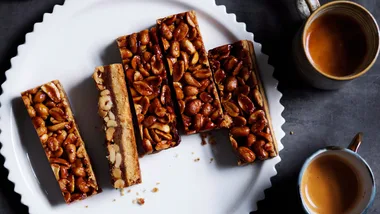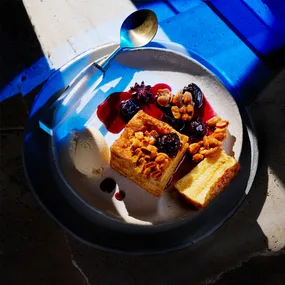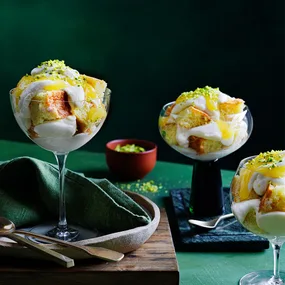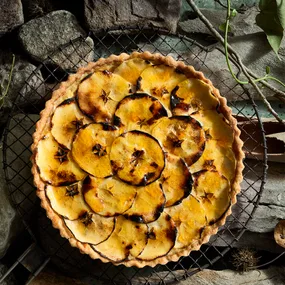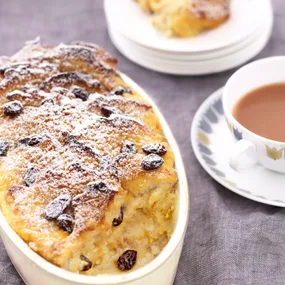Try this recipe with our meringue recipes.
I’ve just got to say it, I’m a little over foam.
I’m a little over soil. And dust too for that matter. But one foam I don’t think I’ll ever get over is meringue. It’s more than a foam really… it’s foam with substance, and not just hot air with the vague taste of something that – poof – magically isn’t there.
At its most basic, meringue is eggwhite and sugar whisked together. French meringue is baked from a raw form; Swiss meringue is a mixture of beaten eggwhite and caster sugar cooked over a bain-marie of simmering water; and the most stable, Italian meringue, is hardly ever used for baking as it’s already cooked completely by the addition of very hot sugar syrup.
Italian meringue is the business. Its glossy, soft peaks make it perfect for frostings – bombe Alaska and lemon meringue pie are two desserts that spring to mind. The soft but pliable consistency can be piped through a star nozzle to create a swirly effect or it can be spooned over and peaked loosely with a spoon. After that, leave it silky snow white or toast it with a blowtorch for a baked look that highlights its textured surface.
Not only suited to frosting, Italian meringue has a versatility that allows it to be used as the base for fillings and frozen desserts, the most common being cassata gelato, where a mixture of Italian meringue and cream is used as a substitute for the ricotta filling in the legendary Sicilian cake. Or it’s bound with extra cream and fruit purée to make a semifreddo sweet’ like the nougat glacé we’ve done here.
There’s a few key tips to making Italian meringue. First of all, you really need an electric mixer on hand. Although it’s possible for one person to pour the boiling syrup and another to whisk by hand, the likelihood of getting a good result (and without a burn) is little to none, unless you’ve got arms like Popeye and the stamina of the Duracell bunny.
Also, use a grease-free bowl for whisking. Eggwhite and fat don’t mix, and that includes all traces of fatty egg yolk. Use eggwhites that are a day or two old as these whisk more readily, more air can be incorporated and there’s less chance of the foam collapsing after being whisked. A pinch of cream of tartar helps, too. It acts as a stabiliser and prevents the meringue from collapsing and becoming overcoagulated. Humidity will also affect the end product, but is less of a concern with Italian meringue, meaning you can make it all-year round. Yippee.
As for the sugar syrup, always make sure your sugar and saucepan are clean, then it’s a game of timing. Cook the syrup to 115C, then start whisking the eggwhites to a soft peak about eight times the original volume in air (keep your syrup cooking in the meantime). This is the stage where a peak will hold the shape of a bird’s beak. Don’t overbeat the eggwhites. By this stage, the syrup should have reached 121C – also known as the hard ball stage. Carefully pour the syrup into the meringue and, while still whisking, watch as the foam erupts and transforms itself into something shiny, soil-free and magical. Poof!
Ingredients
Method
Main
Note This recipe makes about 4 cups.
Notes
 William Meppem
William Meppem
